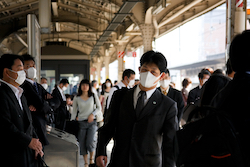Enhanced preparedness and response plans for pandemics
Nowadays, despite medical advances in prevention and treatment, an ever-increasing number of people travelling globally makes the risk of a major pandemic greater than ever. The spread of a disease, such as influenza or smallpox, could occur as a result of accidental exposure or of a deliberate act. Amongst the most likely hotspots for fast disease transmission are transport hubs, such as airports or railway stations. The EU-funded PANDHUB project was set up to develop tools to help transport operators and authorities, tasked with the public’s health and safety, in their preparedness and response plans. The project succeeded in improving the understanding of disease transmission in these contexts by developing an IT system for data collection, a Threat Assessment tool and a framework for the identification of hotspots. It also created guidance for the protection of people and infrastructure, as well as decontamination. A ‘joined-up’ approach that builds society’s resilience PANDHUB’s aim was to facilitate coordinated data collection, collation and analysis, allowing swift epidemiological investigation which could integrate a range of technologies and expertise to help authorities tackle an outbreak or release of diseases with pandemic potential. The team first developed a conceptual framework which broke down the various stages of pandemic management. Explaining the approach chosen, project coordinator Mr Ilpo Kulmala, says, “We considered a ‘cycle’ of requirements for disease threat assessment, preparation, response and recovery, outlining the necessary tasks to be completed for each phase. This allowed us to then design the most appropriate tools.” For example, for the preparedness phase, modelling work was undertaken to simulate the spread of microbial contamination and analytically evaluate the likely impact of countermeasures. For tasks addressing the response phase, IT tools for rapid data collection and sharing were developed. Evidence-based practical guidance for the protection of people was also drafted, with detailed instructions of how to minimise the risk of contracting an infectious disease in a crowded transport hub. Additionally, a decontamination and disinfection guide described suitable cleaning methods for various types of contamination. Mr Kulmala adds, “The capability and robustness of the whole package was assured through early and close collaboration with transport staff and other end-users. Viability was also borne out by reviewing and integrating the local and national practical, legal and ethical implications necessarily involved in multinational incidents and responses.” The project catered for this international dimension of epidemiology, with varying legal and cultural settings, by incorporating participants from three European countries: Finland, the UK and France. Additionally, the stakeholder liaison group comprised representatives from other countries, as well as from the European Centre for Disease Prevention and Control. Sensitivity to international needs resulted in the aforementioned data collection and sharing tool offering different language options, so that the same questionnaire could be used by different countries, ensuring more accurate cross-border data sharing. Additionally, international communication protocols during a serious health hazard were reviewed for effective, timely and accurate information flows. By building the resilience of our society to pandemics, PANDHUB has contributed to the continued upkeep of one of the central pillars on which the European Union rests - the free and safe movement of people. As Mr Kulmala summarises, “In the event of a pandemic, PANDHUB’s epidemiology tools, including the tracing of infected individuals and range of effective methods for cleaning contaminated sites, will facilitate an efficient and rapid response to a cross-border incident, limiting the spread and saving lives.”




